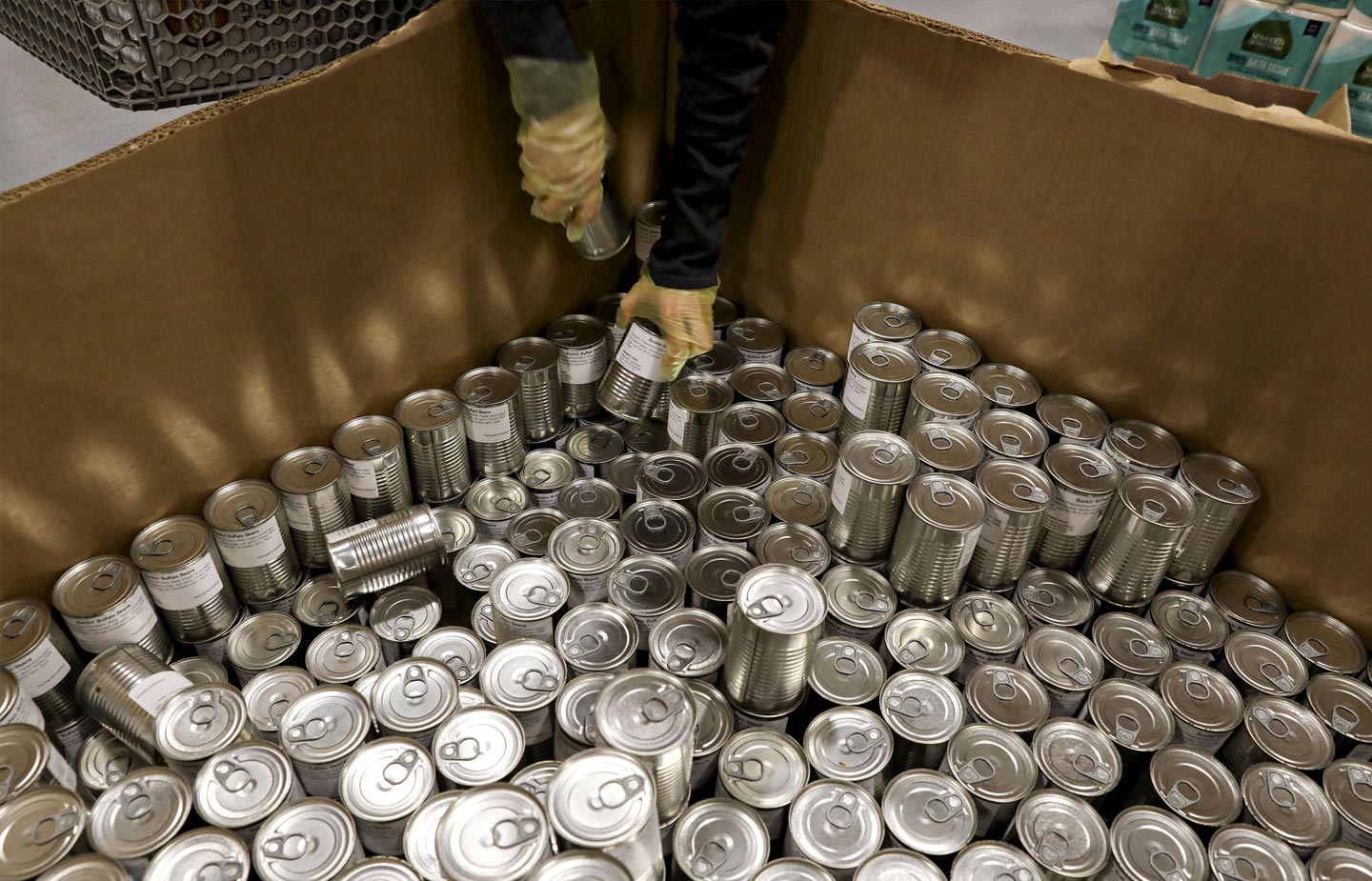Food Insecurity
The food industry nearly broke down due to the COVID-19 pandemic. It will take creativity and ingenuity to recover what’s been lost.
Empty grocery store shelves. Long lines at food pantries. Viral outbreaks at meat-processing plants. When the U.S. shut down in March to mitigate the spread of COVID-19, the food system snapped.
As many families tried to stockpile supplies for a quarantine of unknown duration, grocery stores and food pantries struggled to meet the increased demand. Meanwhile, restaurants, schools and senior centers closed, leaving suppliers and food service companies without a way to get food to customers.
“The pandemic turned everything on its head, especially for congregate and emergency food providers,” said Cara Donovan Mitchell ’08, the food policy manager at United Way of Western Connecticut.
Almost overnight, food pantries lost many of their volunteers, since they tend to be retired people over the age of 60, who are at higher risk for COVID-19 complications, Mitchell said. At the same time, unemployment skyrocketed, grocery stores no longer had merchandise to donate to food pantries, and the disruptions in the supply chain—from closed factories to delayed shipping—meant pantries couldn’t order items in bulk. In some cases, pantry staff were forced to go to grocery stores and buy whatever items remained on the shelf.
“They couldn’t find a lot of the staple items like rice, tuna and pasta, and when they could, it was very expensive since the demand was driving up food prices. The price of pasta went up 40% at one point,” Mitchell said.
“They couldn’t get everything they needed, and more people were showing up at the door than ever before. In Danbury, the number of people going to food pantries tripled, and in Stamford, we saw the numbers double.
“There is extreme disparity and inequality in this part of the state,” Mitchell said. “We were hit very hard. There were pantries running out of food and turning people away.”
While the initial situation was dire, Mitchell says the larger story is one of creativity and ingenuity within the emergency food system.
Younger people who had been laid off or furloughed stepped up to replace elderly volunteers. Senior centers pivoted from serving meals in person to delivery or grab-and-go models. Food pantries and nonprofit organizations began delivering groceries to homebound seniors and others in COVID-19 high-risk groups. Schools provided free meals to families.
Some restaurants and corporations also joined in the effort, in part to keep food service workers employed. Mitchell worked with Food Rescue US, the pharmaceutical company Boehringer Ingelheim and the food service company Sodexo on an initiative through which more than 50 Sodexo cafeteria, catering and kitchen employees at Boehringer Ingelheim’s Ridgefield, Connecticut, campus prepared more than 250 meals a day for community members in need.
“People worked collaboratively to problem-solve and figure out new systems to make sure others had access to food,” Mitchell said.
FARM-TO-TABLE FRAGILITY
Sustainable food entrepreneur David Barber ’88 has been in the farm-to-table restaurant business for more than 20 years. Barber and his brother, a chef, co-own Blue Hill, a working-farm restaurant and consulting company that supports sustainable agriculture. The company has two restaurant locations, one in Greenwich Village and the other at the Stone Barns Center for Food and Agriculture in Pocantico Hills, New York.
Barber remembers worrying about his employees’ safety, particularly at the New York City location, when he first began hearing reports about a novel coronavirus spreading in China and Italy. The restaurant closed on Friday, March 13, and Stone Barns closed the next day. Blue Hill quickly went from 245 employees to 81, a decision Barber called “heartbreaking.”
“A business like ours is labor-intensive, with thin margins and a big staff. We were not prepared—there is no real way to prepare for something like this,” he said.
One week after closing, the company launched a to-go boxed-food program featuring themed boxes of produce, meat and fish. The initial goal was to have some activity for the remaining staff, but very quickly an imperative second goal emerged—to save Blue Hill’s small farming and fishing partners.
“They are pummeled,” Barber said of the more than 70 farms and fisheries that supply Blue Hill. “Most farm-to-table chefs haven’t bought anything since March, and if they have, it has been a fraction of what they would typically buy. How to get these farms through to next spring is a big question mark.”
That’s also a concern of Rachel Black, assistant professor of anthropology, who has spent much of her career studying the production, distribution and consumption of food. This past summer, she worked with four student researchers to study
the impact of the pandemic on small-scale farms in New London County.

